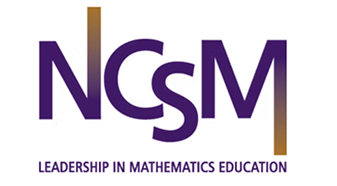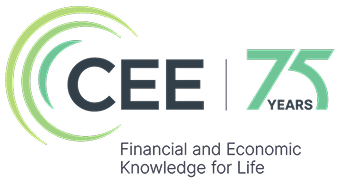Describing variability
Identify differences within data by sorting, grouping, and organizing characteristics. Use statistical and simulation methods to represent and analyze variability, connecting it to real-world uncertainty and probabilistic processes.
K–2 Competencies
Describe how similar objects can differ based on characteristics such as color, shape, and size.
Classroom resources
Data Science Starter Kit Module 3: Making Sense of Data - Analysis and Modeling
Welcome to the exciting part of data science—making sense of the information you’ve collected! This module focuses on how to analyze data to find patterns, understand what the numbers really mean, and start drawing conclusions.🔗
Analysis and Modeling isn’t about complex mathematics or advanced statistics. It’s about developing the thinking skills to look at data and ask, “What story is this telling me? What patterns do I notice? What questions does this raise?” Whether students are working with simple tally marks or sophisticated datasets, the fundamental thinking is the same.
3–5 Competencies
Sort, order, group, or otherwise organize objects or their representations to answer questions.
Categorically describe the center, spread, and shape of a simple distribution and understand what each of these descriptions refer to.
Classroom resources
Data Science Starter Kit Module 3: Making Sense of Data - Analysis and Modeling
Welcome to the exciting part of data science—making sense of the information you’ve collected! This module focuses on how to analyze data to find patterns, understand what the numbers really mean, and start drawing conclusions.🔗
Analysis and Modeling isn’t about complex mathematics or advanced statistics. It’s about developing the thinking skills to look at data and ask, “What story is this telling me? What patterns do I notice? What questions does this raise?” Whether students are working with simple tally marks or sophisticated datasets, the fundamental thinking is the same.
6–8 Competencies
Identify probabilistic processes that simulate various forms of categorical variability, including uniform and normal distributions. e.g., spinner, dice, random draw
Illustrate variability in a dataset by determining how key descriptive features are represented.
Evaluate how visualizations, models, or predictions account for variation at an appropriate level.
Classroom resources
Data Science Starter Kit Module 3: Making Sense of Data - Analysis and Modeling
Welcome to the exciting part of data science—making sense of the information you’ve collected! This module focuses on how to analyze data to find patterns, understand what the numbers really mean, and start drawing conclusions.🔗
Analysis and Modeling isn’t about complex mathematics or advanced statistics. It’s about developing the thinking skills to look at data and ask, “What story is this telling me? What patterns do I notice? What questions does this raise?” Whether students are working with simple tally marks or sophisticated datasets, the fundamental thinking is the same.
9–10 Competencies
Describe methods (e.g., statistical, simulation) to analyze variability in data and connect it to known or hypothesized processes in a specific domain.
Classroom resources
Is Simone Biles the GOAT? by DataClassroom
The purpose of this lesson is to help students apply advanced statistical concepts including data standardization, correlation analysis, and comparative modeling to evaluate claims about athletic performance across different time periods. Students will learn to use z-scores and statistical inference to make fair comparisons when raw data cannot be directly compared due to changing conditions and scoring systems.
Data Science Starter Kit Module 3: Making Sense of Data - Analysis and Modeling
Welcome to the exciting part of data science—making sense of the information you’ve collected! This module focuses on how to analyze data to find patterns, understand what the numbers really mean, and start drawing conclusions.🔗
Analysis and Modeling isn’t about complex mathematics or advanced statistics. It’s about developing the thinking skills to look at data and ask, “What story is this telling me? What patterns do I notice? What questions does this raise?” Whether students are working with simple tally marks or sophisticated datasets, the fundamental thinking is the same.
11–12 Competencies
Apply statistical or simulation methods to model variability to explore uncertainty in real-world situations.
Classroom resources
How Many Babies to Make the Average? by DataClassroom
The purpose of this lesson is to help students understand fundamental concepts of statistical sampling theory and the Central Limit Theorem through hands-on simulation of birth weight data. Students will explore how sample size affects the reliability of population parameter estimates, discover the theoretical foundations of statistical inference, and develop intuition about the practical considerations of sampling in real-world research.
Data Science Starter Kit Module 3: Making Sense of Data - Analysis and Modeling
Welcome to the exciting part of data science—making sense of the information you’ve collected! This module focuses on how to analyze data to find patterns, understand what the numbers really mean, and start drawing conclusions.🔗
Analysis and Modeling isn’t about complex mathematics or advanced statistics. It’s about developing the thinking skills to look at data and ask, “What story is this telling me? What patterns do I notice? What questions does this raise?” Whether students are working with simple tally marks or sophisticated datasets, the fundamental thinking is the same.
Advanced Competencies
Classroom resources
Support other teachers by sharing a resource
Do you have a lesson plan, video, or tip that could help others teaching this topic?
Share feedback on the Learning Progressions
Your feedback helps us improve these progressions for teachers around the world. Thank you!
Share feedback on the Learning Progressions
Your feedback helps us improve these progressions for teachers around the world. Thank you!
Share a classroom resource
Suggesting a resource helps students around the world learn essential data science skills.








.png)














